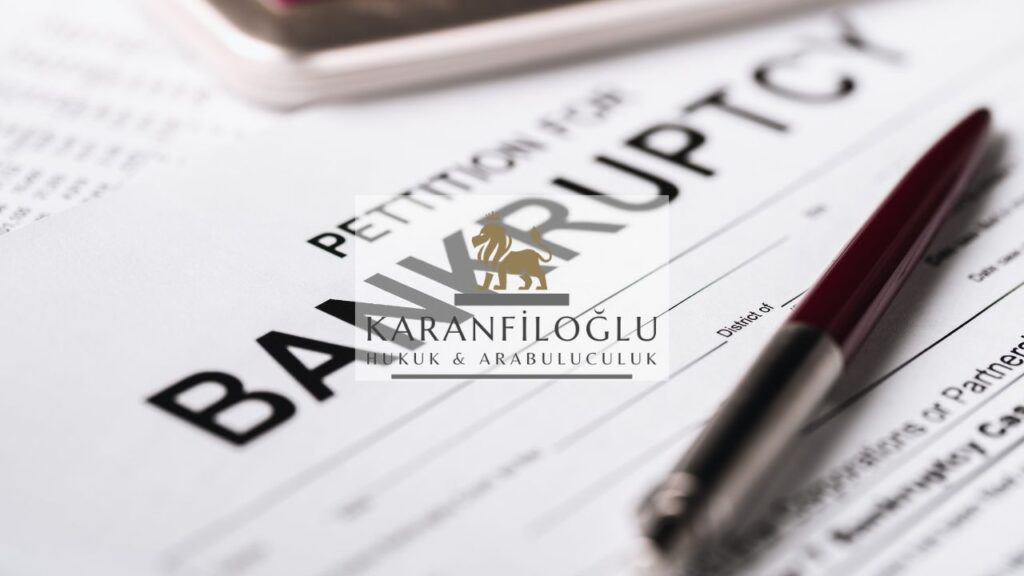The Legal Framework of Bankruptcy in Turkey
In Turkey, the legal framework governing bankruptcy and restructuring is primarily outlined in the Execution and Bankruptcy Law and the Turkish Commercial Code. The Execution and Bankruptcy Law provides detailed procedures for bankruptcy declaration, the administration of assets, and the rights of creditors, while the Turkish Commercial Code establishes the legal grounds for corporate restructuring and mergers. Together, these laws aim to balance the rehabilitation of the debtor with the satisfaction of creditor claims. In cases where a corporate entity is unable to meet its financial obligations, these legal instruments guide the reorganization process with the aim of preserving the business as a going concern, or they dictate the orderly liquidation of assets to pay off debts. The legislation embodies measures ranging from composition with creditors to avoid bankruptcy, to forced liquidation as a last resort, offering multiple avenues for businesses to seek resolution.
The confluence of these statutory provisions is augmented by the Bankruptcy and Enforcement Law No. 2004, which equips companies in distress with additional tools such as concordat proceedings. The concordat process serves as a legal remedy that allows a debtor to reach an agreement with creditors under judicial supervision to restructure debt obligations and avoid bankruptcy. It is designed to support the survival of viable businesses through recovery plans that can include deferments and partial debt forgiveness, operational in nature and often involving operational and financial restructuring measures. For a concordat to be effective, it must be approved by a majority of creditors and sanctioned by the court, ensuring judicial oversight and fairness in the process. The legal framework, therefore, not only focuses on liquidating assets for the repayment of debts but also emphasizes the continuation of the business’s operations, thereby preserving employment and contributing to the economy’s stability.
Moreover, the role of regulatory bodies and the judiciary in the Turkish bankruptcy framework cannot be understated. The Board of Creditors and the bankruptcy administration, together with a designated trustee in bankruptcy, play pivotal roles in navigating the restructuring processes. They supervise the distribution of assets, ensure the equitable treatment of creditors, and maintain transparency throughout proceedings. Furthermore, Turkish courts oversee all insolvency and consolidation actions, with the power to resolve disputes, approve reconstruction plans, and enforce the lawful liquidation of assets. These institutions thereby reinforce the legal framework, instilling confidence in its applicability and integrity, while simultaneously protecting the rights of all parties involved. Such robust oversight mechanisms are essential for the orderly conduct of bankruptcy procedures and for safeguarding the principles of fairness and equitable distribution that are central to Turkish insolvency law.
Strategies for Corporate Turnaround and Recovery
In the face of financial distress, Turkish companies can embark on a strategic turnaround by implementing a robust recovery plan prioritized under local bankruptcy law provisions. Central to this is the preparation of a comprehensive restructuring plan that seeks court approval, aiming not just to satisfy outstanding debts but to revitalize the business’s core operations for sustainable success. The restructuring framework provided by Turkish law often requires expert legal and financial advisory, ensuring that managerial decisions align with the objective to stabilize the entity’s economic health while maintaining transparency with creditors and shareholders. By embracing a pro-active stance and meticulously addressing operational inefficiencies, cost structures, and revenue streams, businesses can effectively navigate through the tumult of corporate crisis, secure creditor consensus, and set a course towards recovery and long-term growth.
The pursuit of an effective turnaround strategy frequently hinges on the ability of a distressed company to negotiate with creditors and draft a workable debt restructuring agreement. This is often a complex negotiation process wherein the company must present convincing projections of its future performance to restore creditor confidence and obtain their support. Debt restructuring may involve extending the life of existing loans, reducing the overall debt burden through concessions or equity swaps, or obtaining fresh financing under more favorable conditions. It is essential that these renegotiations are done within the ambit of Turkish bankruptcy laws, which emphasize the protection of creditor rights even as they provide a lifeline to struggling businesses. Additionally, engaging with stakeholders through transparent communication during this period is important, as it can foster cooperation and make the challenging process of corporate turnaround more achievable.
In the final stride towards revitalization, successful corporate restructuring in Turkey often culminates with the implementation of strategic operational changes aimed at long-term viability. This includes diversifying product lines, penetrating new markets, or streamlining business models to adapt to contemporary market demands. Throughout this transformative phase, the constant evaluation of performance metrics against restructuring goals is critical. Moreover, companies must maintain an agile approach to manage unexpected challenges and seize potential opportunities. Implementing advanced technological solutions and adopting innovative management practices can further enhance competitiveness and operational efficiency. To fully rebound from the brink of insolvency, Turkish companies must not only emerge from financial restructuring but also demonstrate a renewed capacity for growth and profitability, thereby closing the chapter on a precarious fiscal past and setting the foundation for a stable and prosperous future.
Navigating Insolvency: Implications for Turkish Businesses
In the realm of Turkish business, the journey through insolvency and restructuring is particularly nuanced, marked by the necessity to adhere to the strictures laid down by the Law on the Restructuring of Debts and the Bankruptcy Code. These legal frameworks establish a detailed process beginning with an application for reorganization – often a race against time to evade the full brunt of insolvency. The implications of these laws are profound for Turkish corporations, obliging them to meticulously evaluate their operational and financial strategies upon the first signs of distress. It compels dialogue between debtors and creditors, steering towards solutions that may include debt rescheduling, asset divestiture, or even more creative approaches to recapitalization. For Turkish businesses, the steps taken in this precarious phase are critical, with the outcome impacting not only their corporate survival but also shaping the broader economic fabric of the country.
As Turkish businesses plunge into the depths of insolvency, they must consider the implications of debt restructuring within the context of local and international market dynamics. The intricacy of negotiations is heightened by the involvement of various stakeholders, including banks, trade creditors, employees, and shareholders, all with divergent interests. In this delicate dance, businesses strive for a consensus that sustains operations while satisfying legal requirements—a balance that ensures continuity and upholds the principles of fair competition. Further complicating the scene is the potential introduction of foreign investors, who bring with them different expectations and legal perspectives, necessitating an even more strategic approach. For Turkey’s corporate entities, the restructuring process is not merely a legal hurdle but a crucial strategic move that can redefine their market position and carve a path toward long-term resilience.
Conclusively, for businesses in Turkey teetering on the brink of insolvency, the final gambit lies in successfully navigating the legislative framework to emerge leaner, more efficient, and financially viable. Guided by the expertise of seasoned legal advisors, corporations must exploit the provisions of the Bankruptcy Law, prioritizing creditor agreements, and seeking court-sanctioned restructurings. This enables not only the preservation of the business’s core value but also safeguards the interest of all stakeholders involved, crafting a revitalized entity capable of facing future economic challenges. The robustness of this strategic overhaul can often be the deciding factor between a company’s demise and its rebirth, underscoring the significant role that bankruptcy law and corporate restructuring play in shaping the destiny of Turkish businesses amidst adversity.







